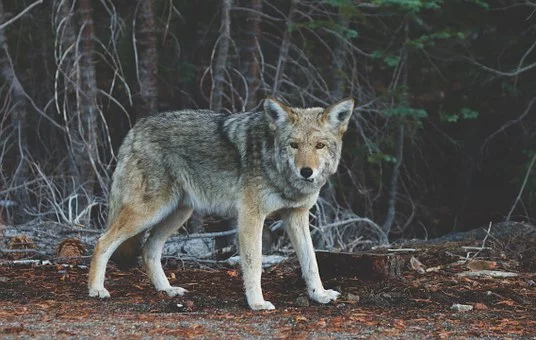Community
Coyote mating season is here in Massachusetts: Here is what MassWildlife says you should know

Seeing or hearing more coyotes lately? You’re not alone. Late January through early March is the mating season for coyotes and they become more active during this time. MassWildlife officials are reminding the public to take action to prevent conflicts with coyotes with these actionable tips.
Protecting pets: Dogs should always be supervised on a leash, especially during the coyote breeding season. Coyotes are territorial animals that live in family groups known as packs. During the breeding season, they become very active in marking and defending their territories to protect their pack from other coyotes and ensure they can successfully raise pups in the spring. Unfortunately, coyotes can’t distinguish your pet from an intruding coyote, and will treat the presence of dogs in their territories as a threat. During the breeding season, coyotes can become more aggressive toward large-breed dogs, including dogs as large as labs and shepherds. Smaller dogs and cats are viewed as prey items by coyotes at any time of the year. Most coyote attacks on pets involve dogs that are off-leash or loose in a backyard.
Removing food: As opportunistic feeders, coyotes will utilize whatever food is naturally available including small animals, insects, and fruits, as well as artificial sources such as garbage, pet food, and compost. Bird feeders and suet also attract coyotes to yards, both as a direct food source and by attracting rodents that coyotes feed on. Coyotes that find human-associated foods will spend more time in yards and neighborhoods. Coyotes that become dependent on these supplemental foods can become habituated, act tame, and exhibit bold behavior toward people. Never intentionally feed coyotes. Most recent coyote bites on people can be directly tied to intentional feeding in the community.
Hazing: Coyotes are highly adaptable to a wide range of habitats and can be found year-round in forested areas, beaches, wetlands, golf courses, and neighborhoods. Coyotes are present in every city and town in mainland Massachusetts, meaning the opportunity for human-coyote interaction is high. While coyotes and other wild animals are naturally afraid of people, this fear can disappear over time when animals spend a lot of time around people or when they are frequently fed by people. Whenever you see a coyote in your yard, you should aggressively haze it by physically chasing it out of the yard, spraying it with a hose, making loud noises by banging pots and pans or blowing an airhorn, and throwing small objects like a tennis ball with the intent to frighten not injure. Repeated hazing helps teach coyotes they are not welcome in your yard, similar to how coyotes naturally chase other coyotes out of their own territories. The more people in a community that haze coyotes, the more effective it will be in making them avoid people.
Don’t let coyotes intimidate you: It’s important to note that negative encounters with coyotes are rare, and attacks on people are even more rare. The presence of a coyote alone is not cause for concern.
Appearance: Coyotes resemble a medium-sized dog in body size and shape, but with longer, denser fur. Typical weights for females are 33–40 pounds, while males typically weigh 34–47 pounds. Coyotes often look heavier than they are, especially during the winter, because of their thick fur.
Vocalization: Coyotes communicate by vocalizing, scent marking, and through a variety of body displays. It is common to hear them howling and yipping at night, or even during the day in response to sirens and other loud noises. When one hears a family of coyotes howling, it’s easy to think the area is overflowing with coyotes, but it’s usually just a few coyotes in a family group. Coyotes do not howl to announce a kill; this would attract other wild animals. Coyotes howl for a variety of other reasons, including locating family members within their territory, warning non-family members to stay away, and advertising for mates during the breeding season.
When to seek help: Coyotes can be active at any time of day and daytime activity is not an indication the animal is sick. If you encounter a coyote that is exhibiting concerning behavior like approaching leashed pets, closely following people, or not running off when harassed, you should contact your local Animal Control Officer or local MassWildlife office for assistance. If there is an immediate threat to public safety, you should call local law enforcement.






You must be logged in to post a comment Login